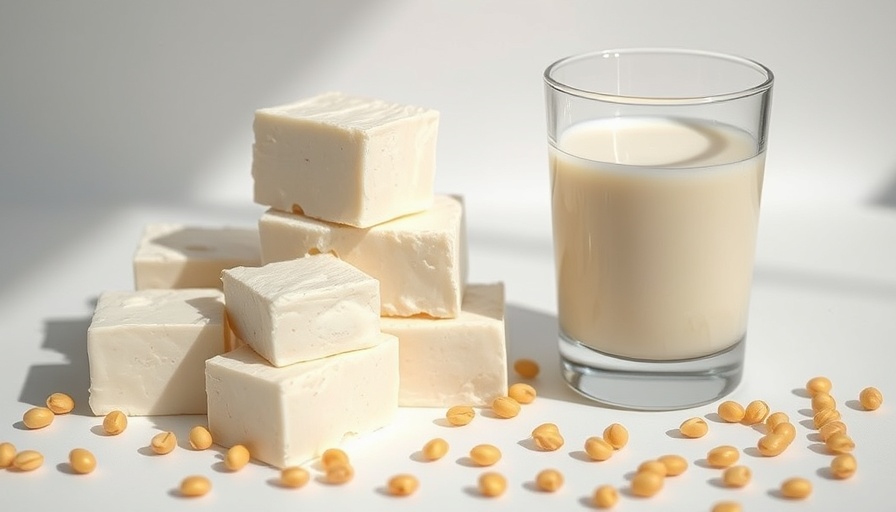
Unlocking the Skin Benefits of Soy: More Than Just a Protein Source
In the quest for youthful and radiant skin, many turn to superfoods known for their antioxidant properties, such as berries and green tea. However, soy products may emerge as an underrated yet potent ally in skincare from the inside out. Rich in isoflavones, soy’s complex compounds offer substantial benefits that are increasingly supported by scientific research, especially for those experiencing the natural effects of aging.
What Are Isoflavones and How Do They Benefit Skin?
Soy isoflavones, specifically genistein and daidzein, mimic estrogen within the body, binding to estrogen receptors. This is significant, considering that estrogen plays a vital role in maintaining skin health by regulating collagen production and moisture levels. With age, particularly after menopause when estrogen levels decline, skin begins to lose its hydration and elasticity, leading to an increase in wrinkles. Herein lies the potential of soy isoflavones—they may offer localized estrogen-like effects that can counteract the consequences of hormonal changes, ultimately supporting collagen synthesis and improving skin hydration.
Compelling Research on Soy’s Impact on Skin Aging
Recent clinical studies provide encouraging data on the benefits of soy for skin aging. For instance, a 2007 Japanese study revealed that middle-aged women who consumed 40 mg of soy isoflavones daily for 12 weeks experienced significant improvements in fine wrinkling and skin elasticity compared to those in the placebo group. Similarly, a more recent study in 2018 with 60 premenopausal participants demonstrated that either fermented or unfermented soymilk consumed daily helped alleviate dryness and improve skin's overall appearance.
Emerging Trends and Future Predictions: Soy in Diet and Skincare
The emerging trend of using dietary approaches to skincare suggests that the integration of soy into daily meals can serve dual purposes—nutritional sustenance and skin health. For those skeptical about the effectiveness of dietary changes, scientific findings lend credence to the idea that supplements such as soy can provide tangible results, particularly among populations facing hormonal fluctuations. With growing awareness and acceptance, products incorporating soy-based ingredients may soon appear in mainstream cosmetic lines, further blurring the lines between food and skincare.
Personalizing Your Diet for Optimal Skin Health
For individuals interested in enhancing their skin health through diet, integrating soy can be an easy and delicious addition. Options like tofu stir-fries, edamame snacks, or creamy soymilk smoothies can become staples within a balanced diet focused on health and wellness. Additionally, skin benefits from regular consumption of soy can be compounded by a diverse array of vitamin-rich foods that also support skin hydration and collagen production.
Debunking Myths: Soy Consumption and Health Concerns
Despite the rising popularity of soy as a health food, misconceptions persist regarding its phytoestrogen content and potential health effects. Some fear that soy may disrupt hormonal balance or even increase cancer risks, particularly breast cancer. However, most current research suggests that moderate soy consumption is safe and can even confer protective effects against certain diseases. It’s essential for consumers to differentiate between whole food sources of soy and processed soy products, choosing the former for maximal health benefits.
As science continues to uncover the restorative properties of various foods, particularly soy, individuals seeking to improve their skin health can reassess their diets to include these nutrient-rich options. By understanding how soy fits into the broader framework of nutrition and skin health, one can unlock its full potential.
In conclusion, the intersection of diet and skincare is becoming increasingly clear, encouraging everyone to take a proactive approach. Regularly incorporating soy into meals not only enhances skin health but also promotes overall wellness. Embrace soy today and nourish your body and skin simultaneously!
 Add Row
Add Row  Add
Add 







Write A Comment